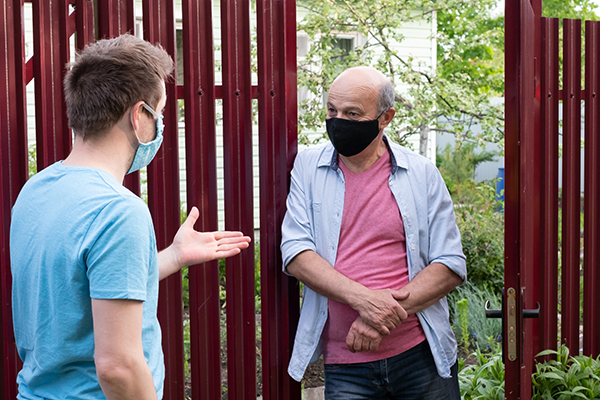Written by Kevin P. Gilmore
For his column From the Director

I recently had the opportunity to read the book “The Art of Neighboring” by Jay Pathak and Dave Runyon (Baker Books 2012) and found the authors’ perspective enlightening and challenging. This article summarizes some of their key concepts in the hope it will challenge and inspire you as well.
We read in Matthew 22 that one of the Pharisees, who was an expert in the Law, challenged Jesus to say which of God’s commandments was the greatest. The Jewish leaders thought they were going to trap Him into saying something heretical, but Jesus wisely reduced everything in the Scriptures into one unifying command: “love God with everything you have and love your neighbor as yourself.” He then added: “all the Law and the Prophets hang on these two commandments.”
Our mission in the Church of the Nazarene is “To make Christlike disciples in the nations.” So, how does that mission, along with what Jesus said, apply to us today? The authors believe the solutions to the problems in our communities are not ultimately found in government, police, schools or even getting more people to go to church. The solutions lie within us through the art of neighboring and doing it well. “Neighboring well” requires us to get back to the basics of our faith—to love God and others—because everything else is secondary.
To “neighbor well” we must first answer the question, “exactly who is my neighbor?” The writers claim one of the challenges in the today’s church is what they refer to as the “Good Samaritan Loophole.” If a Samaritan (considered lowly by the Jews of Jesus’ day) can be our neighbor, then everyone is potentially our neighbor. The authors do not dispute that, potentially, any person we see could be considered our neighbor. But can you really have a meaningful relationship with everyone?
The authors contend the challenge to that perspective is, when everyone is hypothetically our neighbor, then our “neighboring” tends to be hypothetical as well. To put it in the vernacular of a shooting range, when we aim for everything, we hit nothing. We see no substantive results for our efforts, but we tell ourselves everything is okay because at least we tried—or we gave money to some cause that is doing it well.
How about the concept of “aim small, miss small”? If our mission to reach the world for Christ simply starts with those closest to us—the handful of persons who, literally, are our neighbors—achievement of our goal seems a lot more obtainable than trying to win the world on our own. Jesus assumed His audience would be able to love those who lived nearest to them.
In the book, the authors take their readers through an exercise known as the “Block Chart.” It involves a simple sheet of paper with nine blocks, three to a row, with the center block identified as our home. It does not matter if it’s an actual house or an apartment/condo. The eight surrounding blocks represent our nearest neighbors. Again, it does not matter if their geographic location aligns exactly with ours. They could be those next door, across the street, above or below us, or nearby, whom we see coming or going on a regular basis.
The authors challenge us to do three things for each neighbor. First, write down their names; second, write down something relevant about them that you know based on at least minimal interactions (something personal rather than a physical trait); and third, write down in-depth information about our neighbor that could only be known based on a more involved conversation. Think of that last item as a need in their life they would want you to pray about.
I took this challenge and failed miserably—even at knowing the names of my neighbors where I have lived for the past four years! The writers tell us this exercise has been performed thousands of times and initial results are always the same. About 10% can list at least the first names of their neighbors; about 3% can add some level of relevant info; and less than 1% can hit the trifecta and identify in-depth information about everyone.
Imagine if every Christian interpreted what Jesus said about neighboring as the most important thing to do, and then did it! Imagine if every Christian made decisions about their schedules with a bent towards making neighboring a priority.
The authors have created a website with lots of handy resources to help in the pursuit of reaching those around us. I recommend you check it out if you are as challenged, or convicted, as I have been about Jesus’ call to love our neighbor.
Kevin P. Gilmore serves as director of Pensions and Benefits USA for the Church of the Nazarene.
